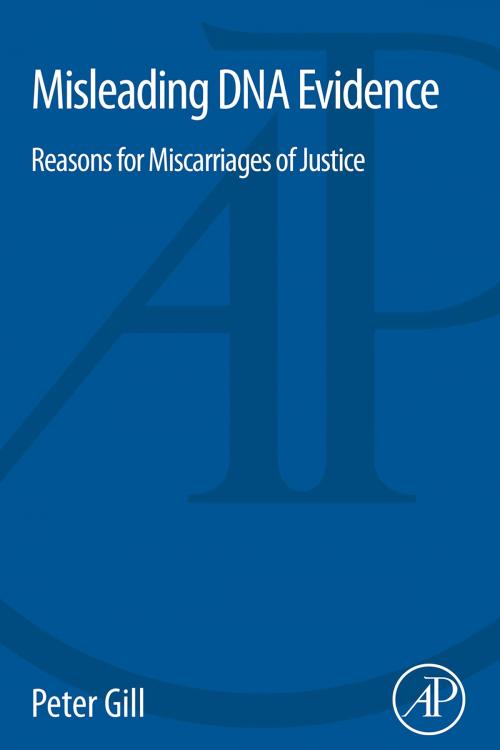Misleading DNA Evidence
Reasons for Miscarriages of Justice
Nonfiction, Reference & Language, Law, Forensic Science, Social & Cultural Studies, Social Science, Crimes & Criminals, Criminology| Author: | Peter Gill | ISBN: | 9780124172203 |
| Publisher: | Elsevier Science | Publication: | June 18, 2014 |
| Imprint: | Academic Press | Language: | English |
| Author: | Peter Gill |
| ISBN: | 9780124172203 |
| Publisher: | Elsevier Science |
| Publication: | June 18, 2014 |
| Imprint: | Academic Press |
| Language: | English |
Misleading DNA Evidence: A Guide for Scientists, Judges, and Lawyers presents the reasons miscarriages of justice can occur when dealing with DNA, what the role of the forensic scientist is throughout the process, and how judges and lawyers can educate themselves about all of the possibilities to consider when dealing with cases that involve DNA evidence.
DNA has become the gold standard by which a person can be placed at the scene of a crime, and the past decade has seen great advances in this powerful crime solving tool. But the statistics that analysts can attach to DNA evidence often vary, and in some cases the statistical weight assigned to that match, can vary enormously. The numbers provided to juries often overstate the evidence, and can result in a wrongful conviction. In addition to statistics, the way the evidence is collected, stored and analyzed can also result in a wrongful conviction due to contamination.
This book reviews high-profile and somewhat contentious cases to illustrate these points, including the death of Meredith Kercher. It examines crucial topics such as characterization of errors and determination of error rates, reporting DNA profiles and the source and sub-source levels, and the essentials of statement writing. It is a concise, readable resource that will help not only scientists, but legal professionals with limited scientific backgrounds, to understand the intricacies of DNA use in the justice system.
- Ideal reference for scientists and for those without extensive scientific backgrounds
- Written by one of the pioneers in forensic DNA typing and interpretation of DNA profiling results
- Ideal format for travel, court environments, or wherever easy access to reference material is vital
Misleading DNA Evidence: A Guide for Scientists, Judges, and Lawyers presents the reasons miscarriages of justice can occur when dealing with DNA, what the role of the forensic scientist is throughout the process, and how judges and lawyers can educate themselves about all of the possibilities to consider when dealing with cases that involve DNA evidence.
DNA has become the gold standard by which a person can be placed at the scene of a crime, and the past decade has seen great advances in this powerful crime solving tool. But the statistics that analysts can attach to DNA evidence often vary, and in some cases the statistical weight assigned to that match, can vary enormously. The numbers provided to juries often overstate the evidence, and can result in a wrongful conviction. In addition to statistics, the way the evidence is collected, stored and analyzed can also result in a wrongful conviction due to contamination.
This book reviews high-profile and somewhat contentious cases to illustrate these points, including the death of Meredith Kercher. It examines crucial topics such as characterization of errors and determination of error rates, reporting DNA profiles and the source and sub-source levels, and the essentials of statement writing. It is a concise, readable resource that will help not only scientists, but legal professionals with limited scientific backgrounds, to understand the intricacies of DNA use in the justice system.
- Ideal reference for scientists and for those without extensive scientific backgrounds
- Written by one of the pioneers in forensic DNA typing and interpretation of DNA profiling results
- Ideal format for travel, court environments, or wherever easy access to reference material is vital















